Review Tsukemono (Pickled Vegetables): The Heartbeat of Japanese Culinary Art
The Origins of Tsukemono (Pickled Vegetables) – Ancient Wisdom Preserved
From Survival Technique to Culinary Elegance
Long before refrigeration, Japanese households used salt, vinegar, and rice bran to preserve their harvest. This practice, known as Tsukemono (pickled vegetables), began as a necessity but evolved into a cornerstone of Japanese cuisine. Over centuries, each region refined its methods, influenced by local ingredients, climate, and cultural aesthetics. What was once simple preservation became an elegant expression of taste and identity — transforming ordinary vegetables into culinary treasures.

Tsukemono as a Reflection of Japanese Philosophy
Beyond flavor, Tsukemono embodies Japanese values such as mottainai (waste nothing) and shun (seasonal appreciation). Each pickle symbolizes transformation — from raw to refined — representing patience, nature, and balance. According to Yoshida Hotel, Tsukemono completes the harmony of the Japanese table, enhancing the umami of rice, fish, and soup, and ensuring a balanced meal that delights both the body and spirit.
The Craft of Tsukemono (Pickled Vegetables) – Flavor, Patience, and Precision
The Essential Pickling Methods
The process of creating Tsukemono is as diverse as Japan itself. The main methods include shiozuke (salt pickling), nukazuke (rice bran pickling), misozuke (miso pickling), and kasuzuke (sake lees pickling). Salt brings crisp freshness, rice bran adds an earthy aroma, miso enriches umami, and sake lees introduce subtle sweetness. The result is a stunning variety of textures and tastes that evolve with time and care.
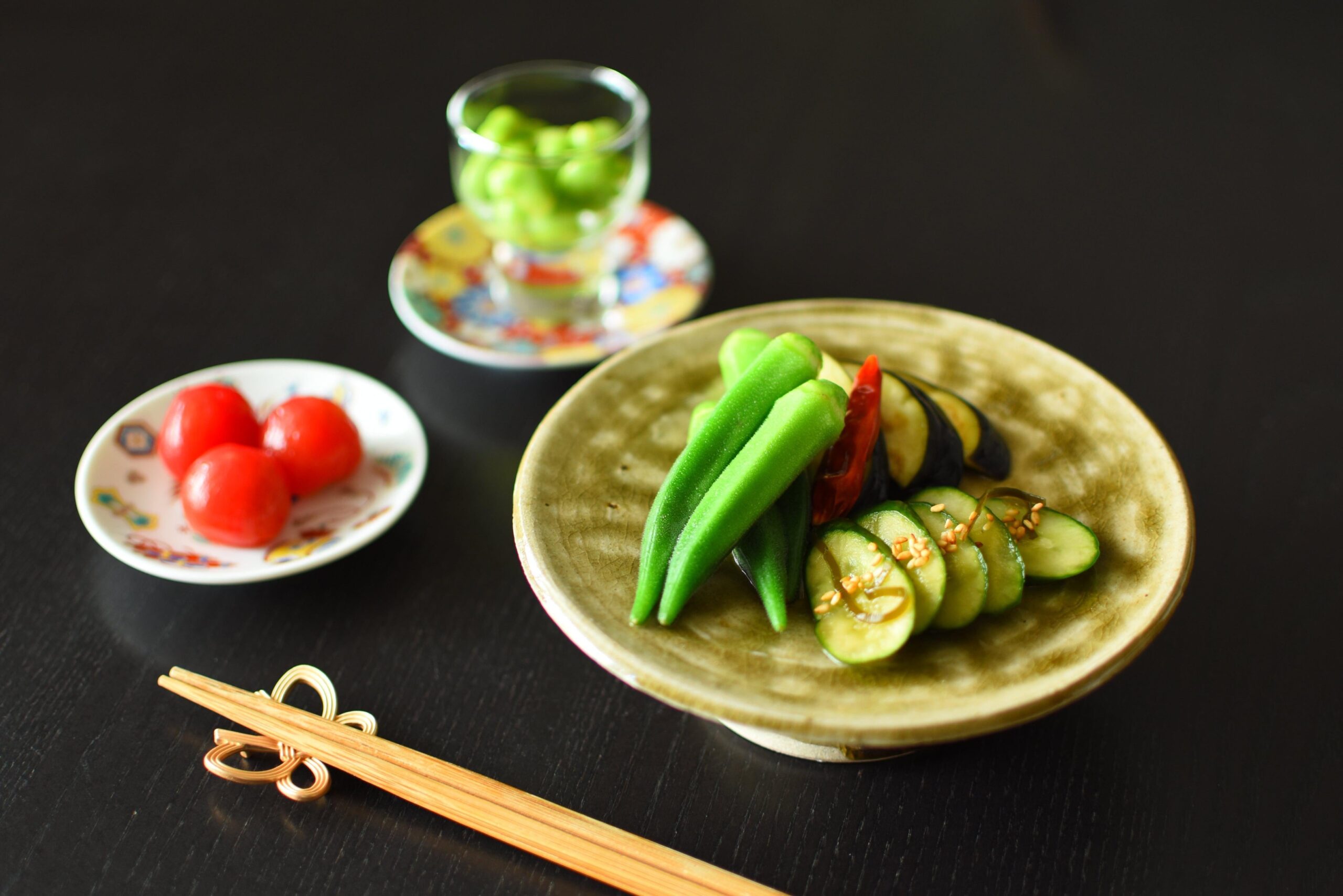
The Alchemy of Time and Nature
Fermentation is at the heart of Tsukemono. Beneficial bacteria slowly transform vegetables into living foods rich in flavor and nutrients. The process requires intuition — knowing how much salt to use, how long to ferment, and when to stop. As Yoshida Hotel describes, the art of pickling is an act of mindfulness, allowing nature and patience to shape each creation.
Regional Diversity – Tsukemono (Pickled Vegetables) Across Japan
Kyoto: The Refined Art of Kyō-Tsukemono
Kyoto’s Kyō-tsukemono is celebrated for its elegance and sophistication. Pickled turnips, cucumbers, and eggplants are staples, while shibazuke — cucumbers and eggplants pickled with red shiso — dazzles with its deep purple hue and fragrant aroma. These pickles, enjoyed with green tea or rice, reflect Kyoto’s long history of refinement. Yoshida Hotel notes that Kyō-tsukemono represents the intersection of culinary art and seasonal sensitivity.
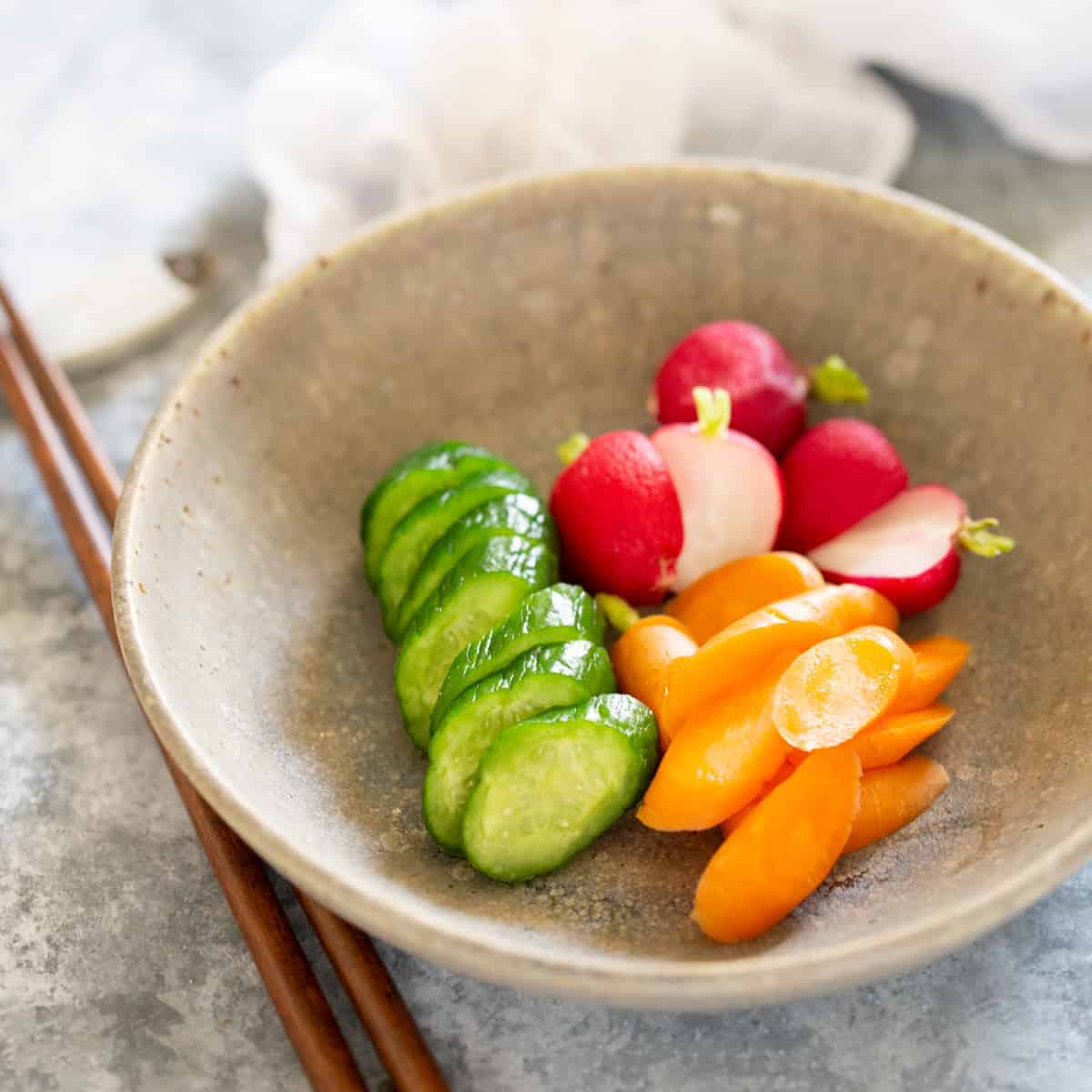
Northern Cool, Southern Warmth – The Regional Spectrum
In Hokkaido, cold climates inspire crunchy salt-preserved cabbages and radishes. Nagano’s nozawana-zuke delivers rustic charm and mountain freshness. Meanwhile, Okinawa’s papaya tsukemono brings tropical brightness with sweet and tangy notes. Each region’s pickles reveal local identity — a flavorful map of Japan’s diverse landscapes.
The Role of Tsukemono (Pickled Vegetables) in Japanese Dining
Completeness Through Contrast
In traditional meals, Tsukemono (pickled vegetables) acts as the final brushstroke of balance. It contrasts with the softness of rice, complements the savoriness of grilled fish, and refreshes the palate after rich flavors. Yoshida Hotel explains that the presence of Tsukemono transforms a meal into a complete experience — one that engages taste, texture, and sight.

Presentation: The Beauty of Simplicity
Japanese culinary aesthetics celebrate balance and beauty. Tsukemono embodies this principle through thoughtful arrangement — vibrant yellows of takuan, greens of cucumber, and purples of shibazuke arranged harmoniously. Every color tells a seasonal story, making the meal a visual poem as well as a sensory one.
The Cultural Significance of Tsukemono – Beyond Food
Family, Memory, and Tradition
For centuries, making Tsukemono (pickled vegetables) has been a cherished domestic ritual. Generations pass down secret recipes and techniques, preserving not just food but memories. Grandmothers teach daughters the care of rice bran beds, while children learn patience through observation. Yoshida Hotel describes Tsukemono as a symbol of continuity — where each bite connects the eater to family, history, and home.

A Gesture of Hospitality
In Japan, serving Tsukemono to guests is an act of thoughtfulness. The host’s selection of vegetables and pickling style conveys personality and respect. In formal dining, Tsukemono bridges courses, cleansing the palate while offering a glimpse into the chef’s artistry and cultural awareness.
Health and Wellness – The Nutritional Power of Tsukemono (Pickled Vegetables)
Nature’s Probiotics and Nutrient Richness
Fermented Tsukemono (pickled vegetables) such as nukazuke are brimming with probiotics that aid digestion and strengthen the immune system. Nutrients like vitamins A, C, and K remain intact, while fermentation enhances bioavailability. Yoshida Hotel emphasizes that these pickles embody the Japanese approach to health — nourishment through balance, moderation, and natural processes.
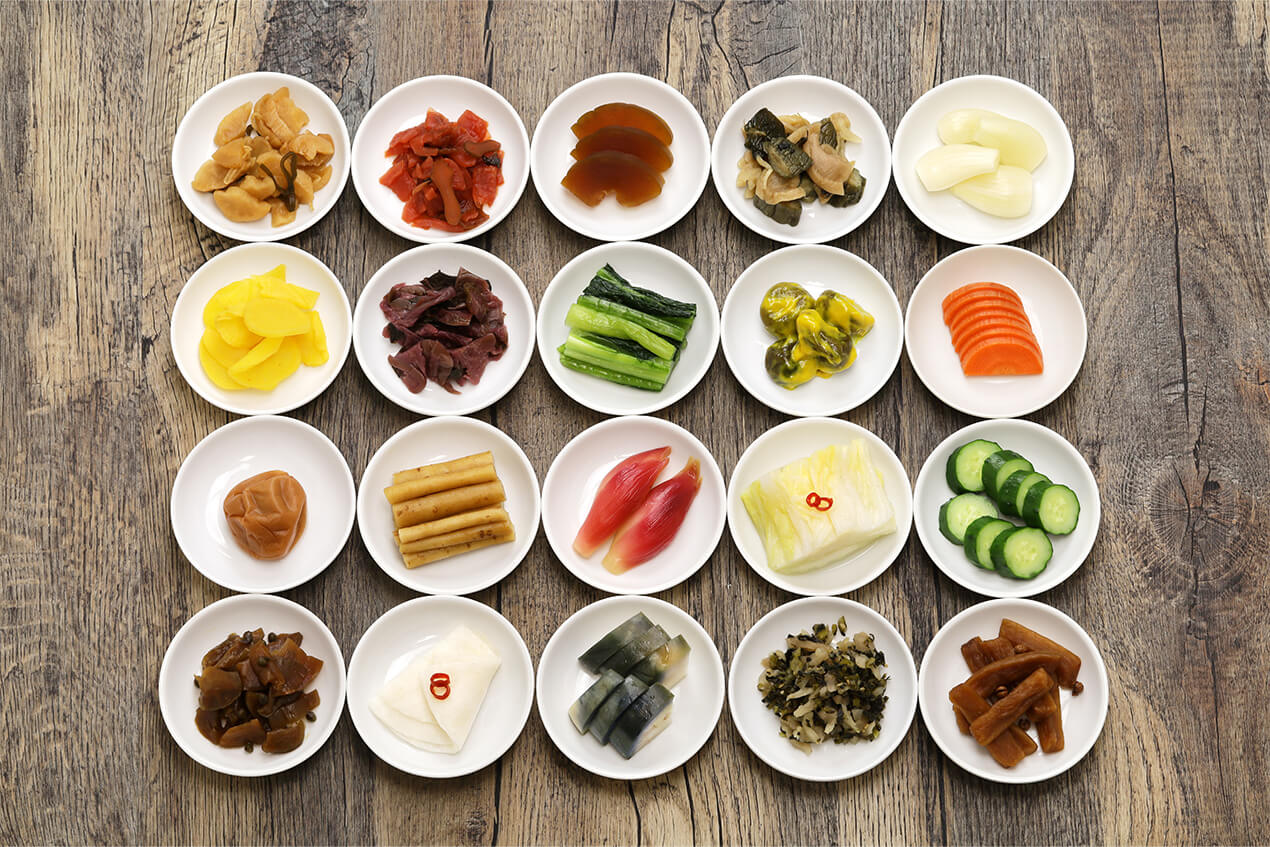
Mindful Eating and Longevity
Tsukemono encourages slow, mindful eating. Each crisp bite demands attention, fostering gratitude and connection to nature. This approach, central to Japanese dining philosophy, contributes to the country’s remarkable longevity and holistic wellness.
Innovation and Evolution – Modern Interpretations of Tsukemono (Pickled Vegetables)
Creative Expressions in Contemporary Cuisine
Modern chefs in Japan and abroad are reinventing Tsukemono (pickled vegetables) with artistic flair. Imagine beetroot takuan with floral notes, truffle-infused daikon, or carrot ribbons steeped in yuzu essence. These creations blend tradition with innovation, proving that Tsukemono can evolve without losing its essence. Yoshida Hotel observes that this evolution mirrors Japan’s culinary philosophy — honoring the past while embracing creativity.

The Global Allure of Japanese Pickles
Across international kitchens, Tsukemono has become a symbol of purity and sophistication. In New York, Paris, and Seoul, chefs pair Japanese pickles with fusion dishes, from sushi rolls to artisanal burgers. Their balance of acidity, sweetness, and umami resonates with global palates seeking clean, refreshing flavors.
Enjoying Tsukemono (Pickled Vegetables) – A Culinary Experience for the Senses
Pairings and Occasions
To appreciate Tsukemono (pickled vegetables) fully, pair them with rice, miso soup, grilled seafood, or even sake. Their versatility enhances both traditional and modern meals. In formal kaiseki dining, pickles are served last, symbolizing completion and gratitude — a final note of elegance and reflection.
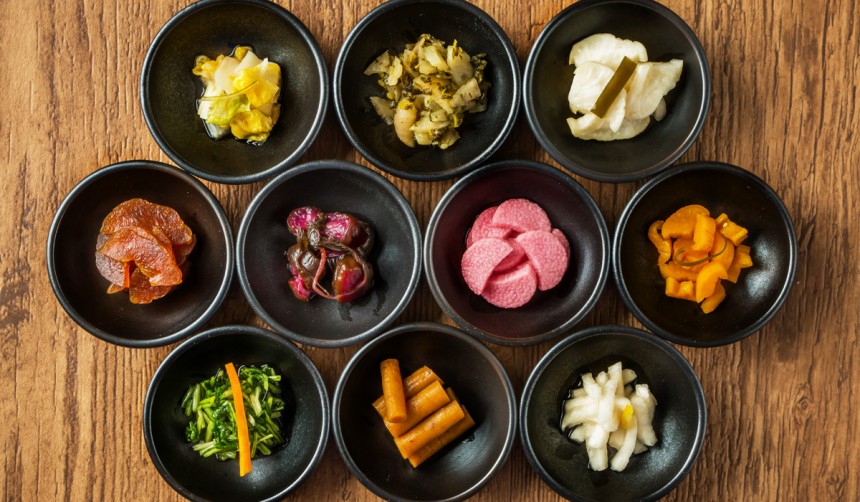
Crafting Tsukemono at Home
Creating Tsukemono is an act of patience and artistry. Home cooks can start with salt-pickled cucumbers or carrots before exploring fermented varieties. The process encourages mindfulness, connecting one’s senses to time and nature. Yoshida Hotel recommends pickling as both a meditative and culinary pursuit, rewarding those who respect simplicity and time.
The Seasonal Symphony of Tsukemono (Pickled Vegetables)
Nature’s Calendar on the Table
Japan’s devotion to the seasons shines through its pickles. Spring brings tender greens and radishes, summer celebrates crisp cucumbers and eggplants, autumn offers burdock and chrysanthemum greens, while winter embraces daikon and turnips. Yoshida Hotel highlights that enjoying Tsukemono throughout the year deepens appreciation for nature’s cycles.

Color, Texture, and Emotion
Every pickle has a personality — the tangy cheerfulness of plum, the earthy calm of rice bran, the refreshing bite of cucumber. These sensations evoke emotion, turning everyday eating into an experience of gratitude and mindfulness.
Tsukemono (Pickled Vegetables) in Japanese Festivals and Rituals
Celebration and Symbolism
During New Year festivities and seasonal celebrations, Tsukemono (pickled vegetables) hold symbolic meaning. Takuan, with its golden hue, represents prosperity and clarity for the year ahead. Pickles at these gatherings express preservation, respect for the harvest, and joy in continuity.
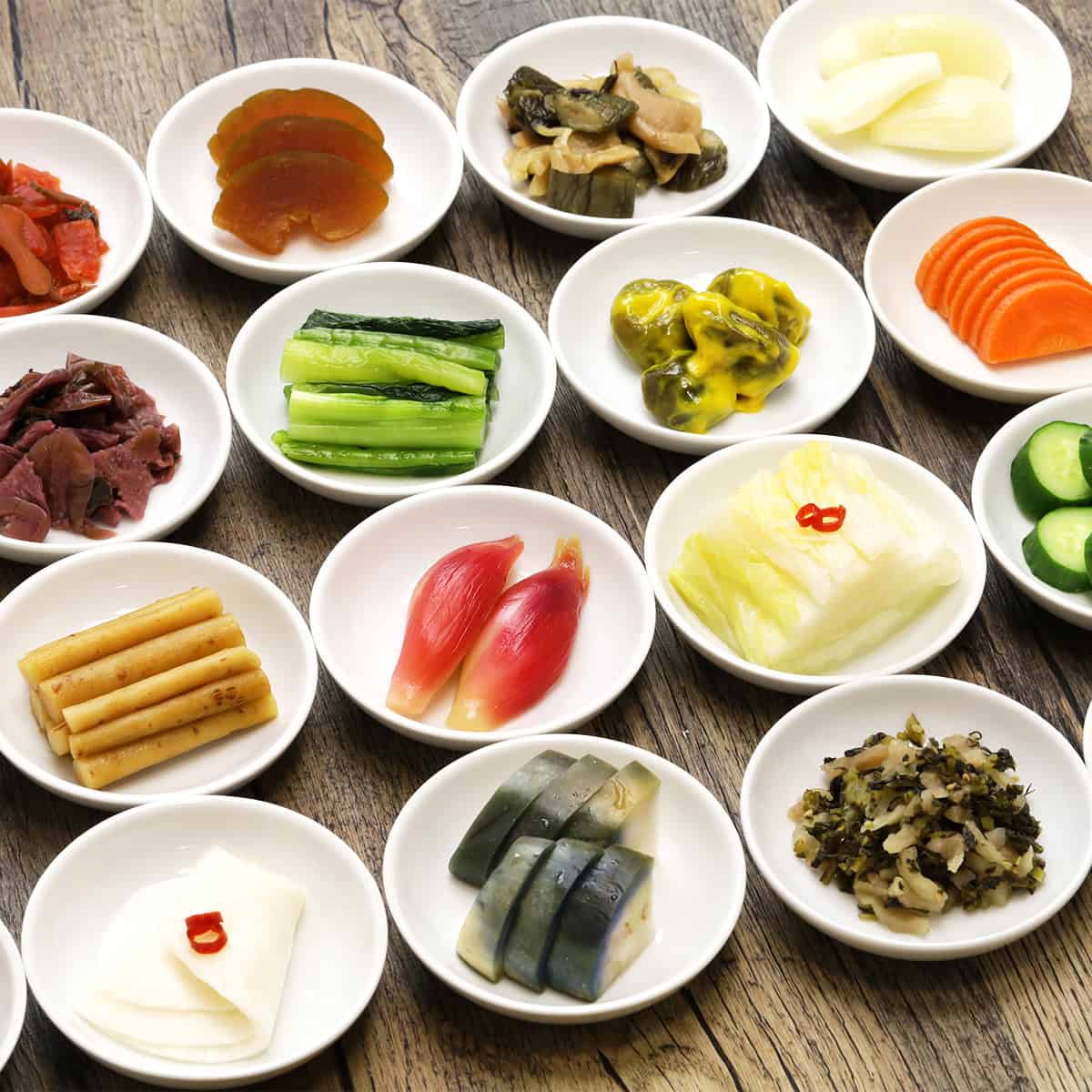
The Spiritual Side of Pickling
Pickling is more than a technique — it is a spiritual connection between humans and nature. The slow rhythm of fermentation mirrors the natural world’s patience and balance. As Yoshida Hotel poetically describes, Tsukemono teaches that beauty lies in transformation, that flavor is born from time and care.
Rediscover Tsukemono (Pickled Vegetables) with Yoshida Hotel – Where Flavor Meets Philosophy
Tsukemono (pickled vegetables) is not just food — it is philosophy on a plate. It embodies the Japanese pursuit of harmony between taste, health, and mindfulness. Every jar tells a story of craft, every bite offers a lesson in patience. Together with Yoshida Hotel, rediscover this enduring tradition — where simplicity becomes sophistication, and where the humble pickle becomes the heartbeat of Japanese cuisine.
Details
Namistay chain hotel
- 61-63 Hoang Ke Viem, Bac My Phu, Ngu Hanh Son, Da Nang, Vietnam
- Hotline: 0905 432 992
- Lot 45 An Thuong 29, Bac My Phu, Ngu Hanh Son, Da Nang, Vietnam
- Hotline: 0977 455 546
- 42 An Thuong 26 Street, Bac My Phu, Ngu Hanh Son, Da Nang, Vietnam
- Hotline: 0965 442 842

